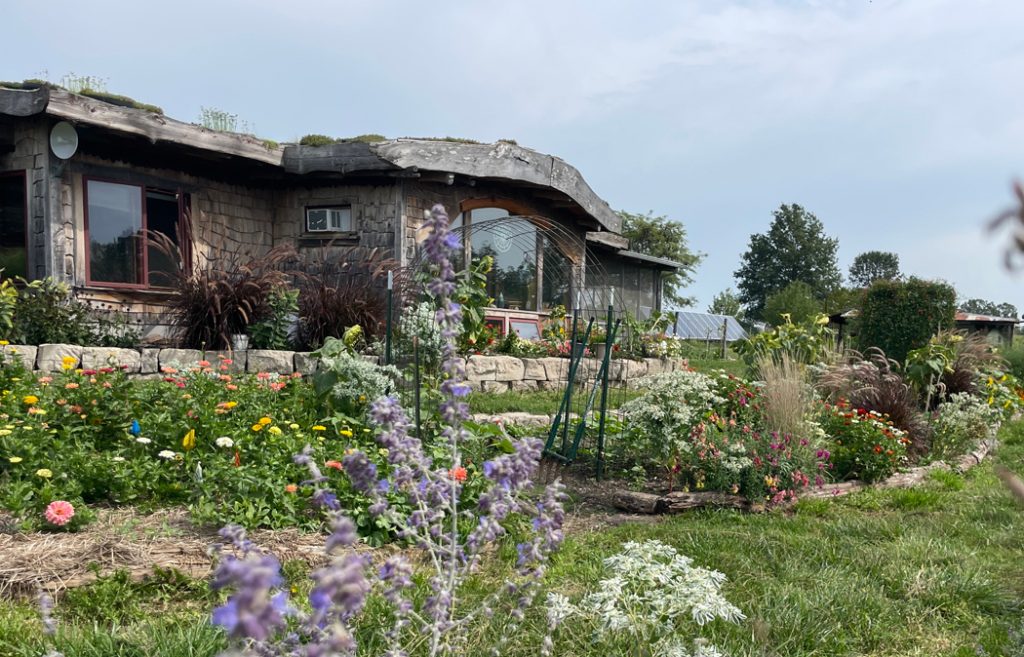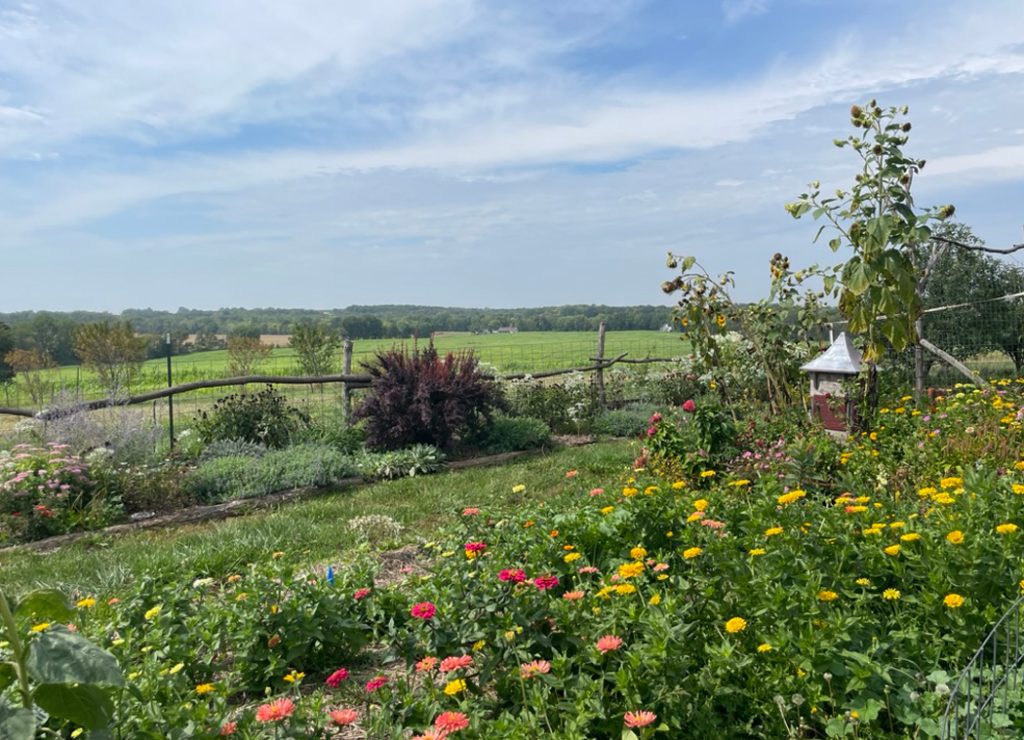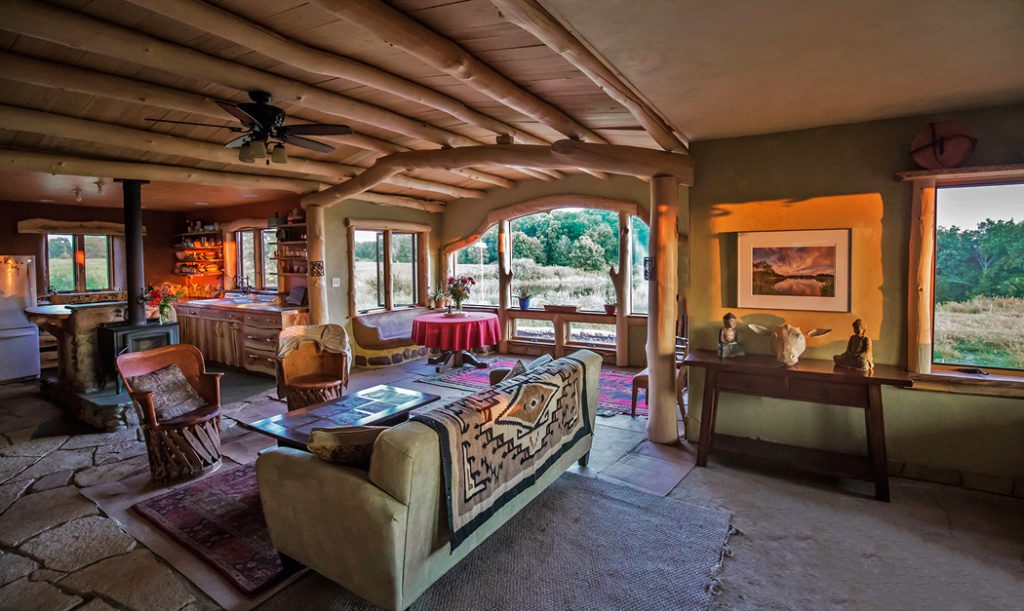
Hickory Highlands farmhouse, the home of John Freeberg and Susan Walch, is circled by rainbow zinnias, sunflowers, vegetable beds, and fruit trees. Ringed by a fence that follows the curve of the land, the farmhouse appears to rise from the landscape. An aerial view of the home looks like a garden: the roof is a garden of succulents that bloom each spring, its stone pathways only adding to the optical illusion.
The home’s walls and floor are earth with stone pathways, and some straw bales. The alfalfa and hayfields are to the west of the home. Whole hickory trees, stripped of bark and dried but otherwise untreated, serve as support beams and rafters in the living room and come from the woods downslope to the west. Cherry and hickory trees from the same woods frame the south facing windows too. Even the swallows felt at home and built a nest on a branch while the home was still under construction. The next year, the swallows flew in the door, found that a window had been installed, and flew back out to nest in the eaves.
“Then we built the barn,” Susan Walch tells me. “Now they’re in the barn. ‘You finally made a barn for us barn swallows!’”

“There’s just so many stories,” Susan says. “Where did that door come from? What about that side? What about that post? Right? You know, what about those cross boards? Every single thing has a story.”
Those stories, I quickly learn, always entail a friendship, whether old or new. The smooth stones in the hearth are from the fields in John Freeberg’s family farm, tilled up by generations. The gleaming jewel tone backsplash involved two new friends: local artist Karla Christensen who taught mosaic classes, and a man at a local company Creative Edge who became fascinated by the farmhouse. “He goes, here, and he showed us this onyx. And we said these are perfect. So we bought 10 tiles and then I smashed them,” Susan grins.
The construction phase of the home served as a field trip for green building students. The farmhouse is passive solar, its stunning views of rolling farmland framed by sunflowers doubling as a way for warmth to enter the uncoated custom glass in winter. The earth and rock floor absorb the warmth.
“In the middle of winter, when the sun is high in the sky, at the high point of the day midday the sun comes all the way back to here,” John says, standing almost against the far wall. In the summer the sun is high, and the overhang keeps direct rays out of the home with no need for curtains.

“We don’t have a furnace. We don’t have any ducting,” Susan says. “The house is pretty much naturally cool in the summer because of all of the earth. When it’s 90 to 100 day after day after day after day we put in a little window unit and so it goes from 98 outside to 80 inside, which is fine for us. And in the winter, if the sun is out the house is 70 degrees. It doesn’t matter if it’s minus 20 outside. The house is nice and toasty. The woodstove is for mornings, evenings, ambiance, cloudy days, we often have the fire going just because it’s cozy.”
From the cut of the stones that wind through the living room to pool around the wood stove and flow to the kitchen door, to the rosy cob wall in the bathroom, and the soft, light filled quality of every room, there’s an organic, alive feeling: every piece placed in harmony with all others. The farmhouse at Hickory Highlands is unmistakably a labor of love and community that continues to bring people together, and now brings other homes together too. Homes that can tell the stories some of us are too young to remember, homes that reflect the love and care of their residents and custodians, and homes that inspire us to think differently about our sense of place and relationships with the land, with the sun, with water, with materials, and with one another.
